A few weeks ago, when I wrote about the connection between the words freebooter and filibuster, I linked to this chart showing the frequency with which the two words have been used in the last couple of centuries:
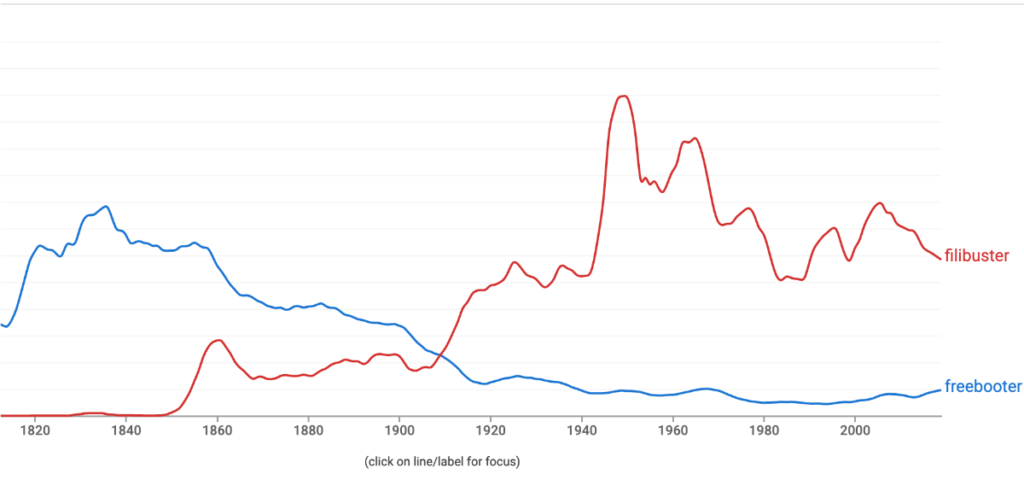
I generated this chart in Google’s Ngram Viewer. The Ngram viewer is a great resource for a writer, or for anybody who is interested in the ways language has changed since 1800. It’s a search tool that combs through the forty million books and periodicals that have been scanned into Google books and calculates the frequency with which a word appeared in print each year from 1800 to the (almost) present.
In this chart you can see that the word ague (meaning “chills and fever”) isn’t nearly as popular as it used to be:
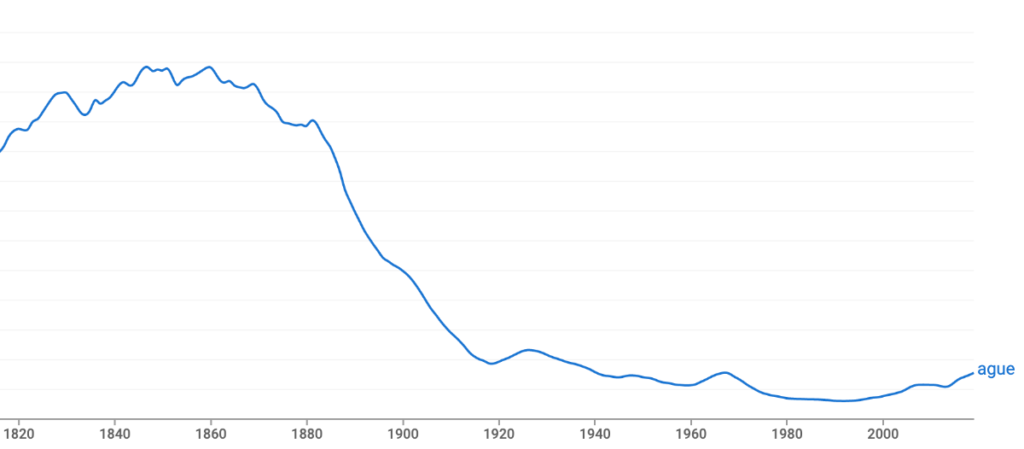
Why did ague drop off a cliff after 1880? I don’t know. But I heard a lot of people complaining of chills and fever after they got the Covid shot; I didn’t hear anybody complaining of ague.
Or check out this chart of icon:
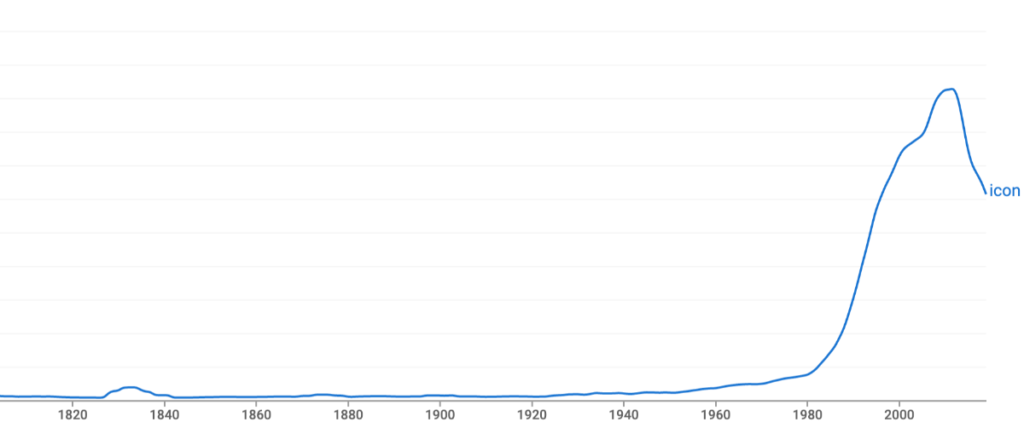
Except for that bump in the 1820s and 30s, icon is mostly minding its own business for 150 years. Then it starts to get a little more popular in the 1950s and 60s—maybe because people like Elvis and the Beatles and other stars of popular culture came to be called icons? (This mid-20th century increase is harder to see in the chart above, but it’s much more obvious when you set the date range at 1900-1970.) Then look what happens once personal computers become popular in the 80s and 90s and the “desktop icon” is invented!
The Ngram Viewer is especially helpful for writers of historical fiction. If you were to refer to the Spanish Flu of 1918 as a pandemic, you would be using the word correctly. No disease has better fit the definition of pandemic: “(of a disease) prevalent over a whole country or the world.” Your other choice would be epidemic—”a disease that affects a large number of people within a community, population, or region.” But that doesn’t begin to cover the case, at least not by current usage.
Let’s say, however, that you were writing historical fiction set in 1918. Would your characters speak of the Spanish Flu as a pandemic or an epidemic? The Ngram can help answer that question. Here’s what happens when you put “pandemic,epidemic” in the search box:
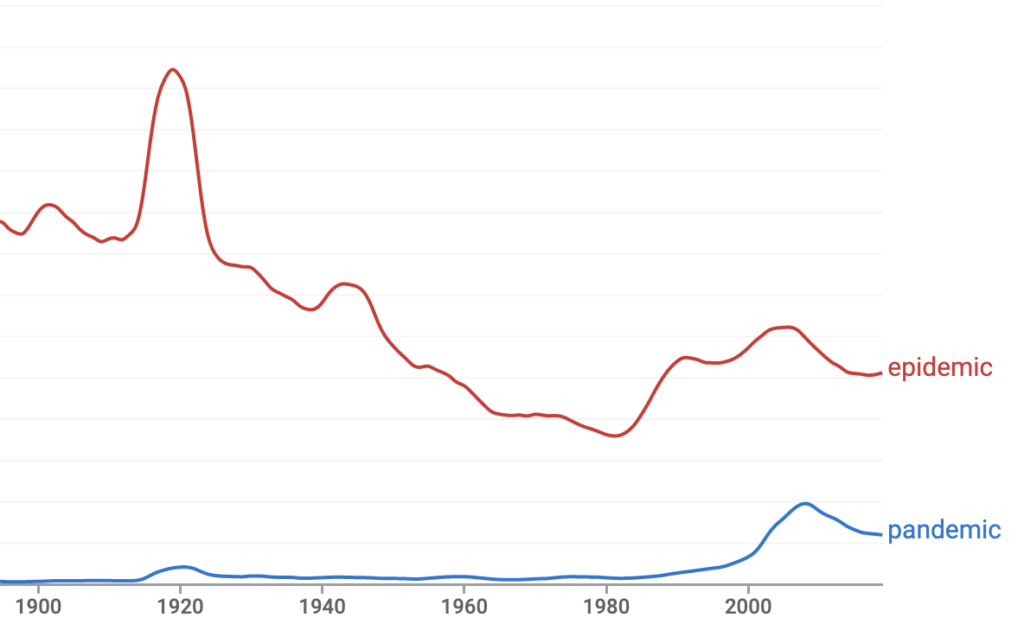
Pandemic got a little bump around 1918, but it was nothing compared to what happened to epidemic. It will be interesting to see what the “pandemic,epidemic” chart looks like after the data from 2020 is added.
Sometimes an Ngram shows what happens when a word gets a new meaning. Here’s the chart for stiletto, which originally meant “dagger” (from the Italian), then came to refer to a dagger-like high heel.
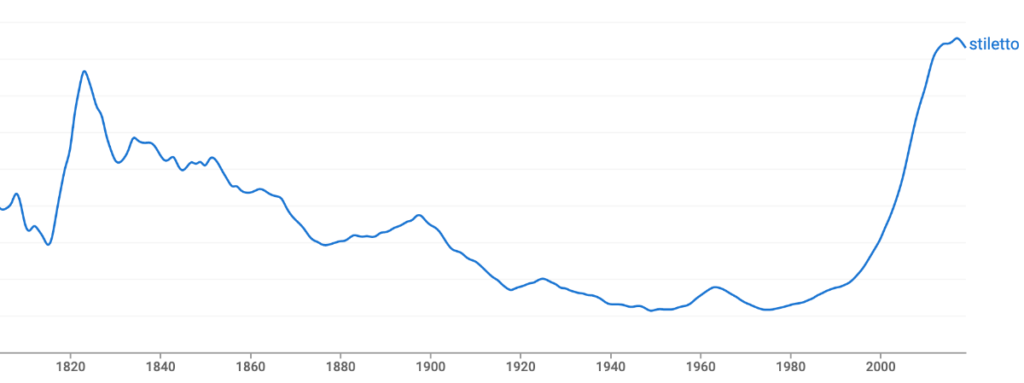
From the looks of things, Italian assassins were on everybody’s minds in the 1820s and 30s, but interest in them and their weapons declined steadily until it occurred to somebody in the 1990s to refer to really high heels as stilettos.
Here’s an interesting one. Look at the sharp increase in the use of the words red and blue in the last thirty years, since people have started talking about political polarization in terms of red states and blue states:
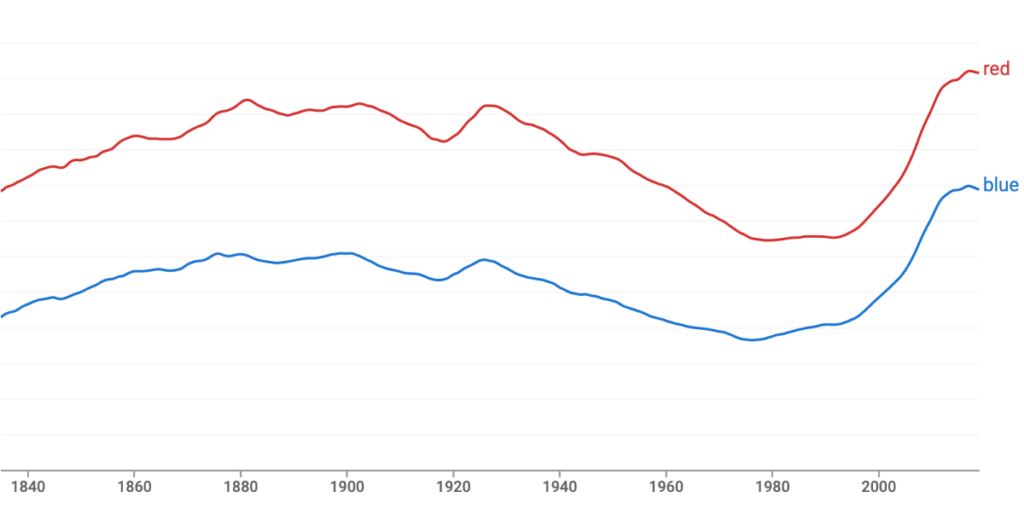
I realize that there could be other, non-political reasons for this spike in the frequency of red and blue. So as a “control,” let’s throw in yellow, which hasn’t taken on any new political significance in the last thirty years. (Sorry the line for yellow is green…I couldn’t figure out any way to change the color.)
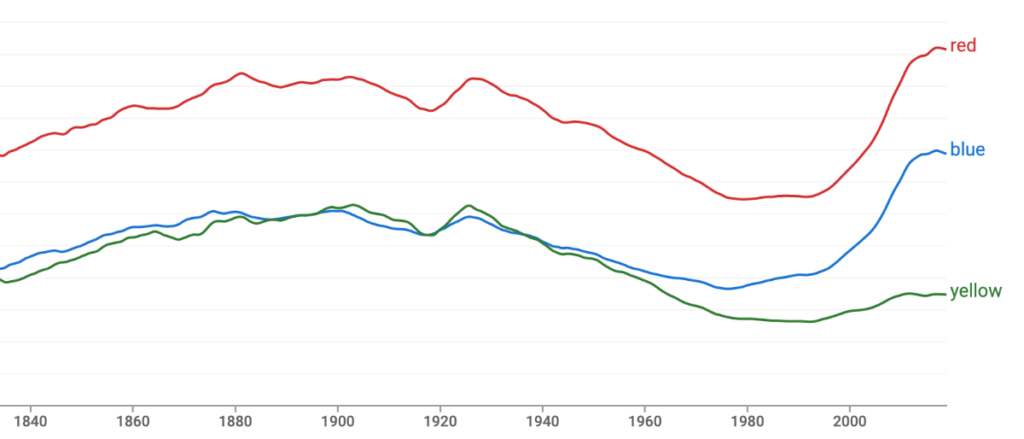
As you can see, the three words’ use tracked pretty steadily (especially yellow and blue) until the 1990s, when yellow got left behind.
The word neato has an interesting graph as well:
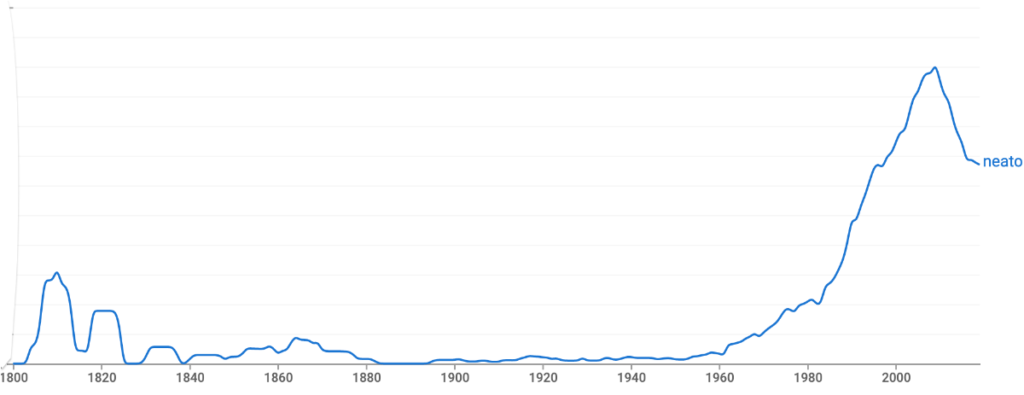
First of all, I’m surprised to see that people were saying neato in the 1810s and 20s. I don’t remember coming across that word in Pride and Prejudice. But I’m even more surprised to see that the word peaked in the first decade of the 2000s. I remember that decade pretty clearly, and while I remember the word neato being used, I don’t remember its being used unironically. Unless there’s just something goofy about the data, this chart suggests to me that the word neato‘s main uses have been ironic, and overwhelmingly so.
Ok, one last chart. The original spelling of possum was opossum. As a child I was a tad confused by that spelling. I never heard anyone pronounce that initial “o” unless they were reading it from a page. Was it a silent “o”? Was “possum” a slangy, countrified mispronunciation? Were the sophisticates in, say, Boston or Manhattan talking about “opossums” while they sipped champagne at gallery openings? (Actually, I still don’t know the answer to these pronunciation questions. If you pronounce it “opossum,” I’d love to hear from you—especially if you’re a sophisticate from Boston or Manhattan.)
Anyway, I have had the impression that the original “opossum” spelling has been losing ground in the last few decades. So I ran an Ngram. Here it is:
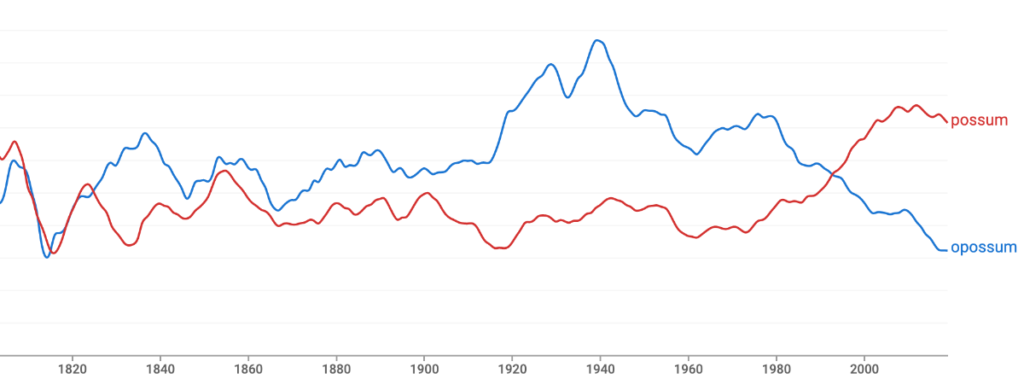
It looks like the “opossum” purists lost the upper hand around 1990. I don’t see them making a comeback, either. The people have spoken.
I should caution you against putting too much stock (or the wrong kind of stock) in Ngrams. They can only comment on the printed word, and only on those books and periodicals that are included in Google Books. The usage of neato in speech might be pretty different from its usage in print, for instance. It’s not hard to imagine there being a significant lag between the time it gets popular in spoken English and the time it starts to appear in written English. So in your term paper you probably shouldn’t say “The year 2001 saw an 11% increase in the use of the word neato.” Ngrams don’t give you that kind of precision.
But Ngrams can provide you with some interesting points of departure, and they can rescue writers of historical fiction from embarrassing mistakes. I encourage you to poke around with the Google Books Ngram Viewer. And I hope you’ll share some of your discoveries with me. Maybe I’ll do a follow-up letter with some of the interesting things I learn from you.








